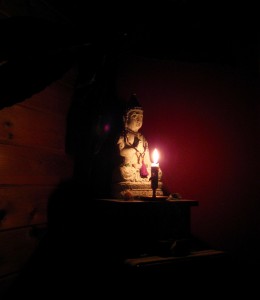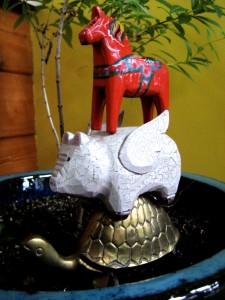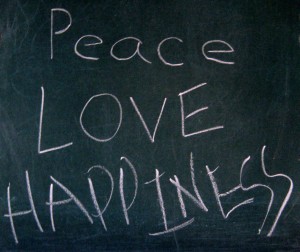
– Photo by Jan Ketchel
To make room for the new, we must clear out the old. The challenge, in letting go, is the depth of our attachment to the familiar. The identity we have forged secures us within the safety of the known.
The known identity is often heavily laden with negative and limiting beliefs, which become the boundaries of the self. To find the self in new ways, we must venture beyond the comfort of the chrysalis that has provided stability, darting past the limitations it has imposed upon the unfolding of our fuller selves.
The internal dialogue, specifically, the words we say to ourselves and others, powerfully determines the self we know. St. John begins his Gospel: “en arche en o logos” (in the beginning was the word). And that spoken word became the flesh. Or, as the Shamans of Ancient Mexico put it: words are directly linked to intent, the key to manifestation. As Descartes put it, “I think therefore I am.”
Norman Vincent Peale highlighted The Power of Positive Thinking, as a practice to suspend the power of judging words to forestall the unfolding self. We are all programmable beings, much like the Artificial Intelligence (AI) of Siri and Alexa.
Our subconscious awaits commands in the form of the words we tell it we are. Those words manifest in the behavioral patterns, moods, and beliefs that we program ourselves to automatically enact. Change the words, change the mood and the outlook.
Would, of course, that change were so simple. And yet, in many ways it is that simple. Observe the power of a charismatic leader whose words galvanize the mood of the world. This is the action of mass hypnosis, and, at some level, we are all hypnotic subjects. Why not give ourselves positive, supportive, and encouraging messages?
Always forgive the self, for everything and anything. Rather than bemoan one’s weaknesses and limitations, validate the willingness to face the full truth, and move forward unburdened with negativity.
Observe and interrupt automatic conclusions about one’s abilities, such as, “I am a terrible writer.” Reframe it with, “I am a being learning to write.”
Treat words as power objects capable of casting spells. Cast only positive spells upon the self.
Try, “I am a being open to the magic and mystery of life.”
Or, “I am a caring being open to sharing myself with a compatible other.”
Beyond the words that we consciously state are experiences we may store unconsciously, beyond our awareness, that hold their own powerful words of influence. These are made known to us through the triggers of everyday life that suddenly transport us to dark, frozen places.
To neutralize the spells these triggers cast, we must take the journey of recapitulation. In recapitulation we relive and fully retrieve our lost selves, as we open to full acceptance of every aspect of life lived. With acceptance comes love. With love comes the energy to open to new life, with all our vulnerabilities.
Finding self is the journey of a lifetime. Carefully chosen, supportive words and ongoing recapitulation are the tools to achieve this wholeness of self. Exercise these tools! See what happens!
Warm words,
Chuck




